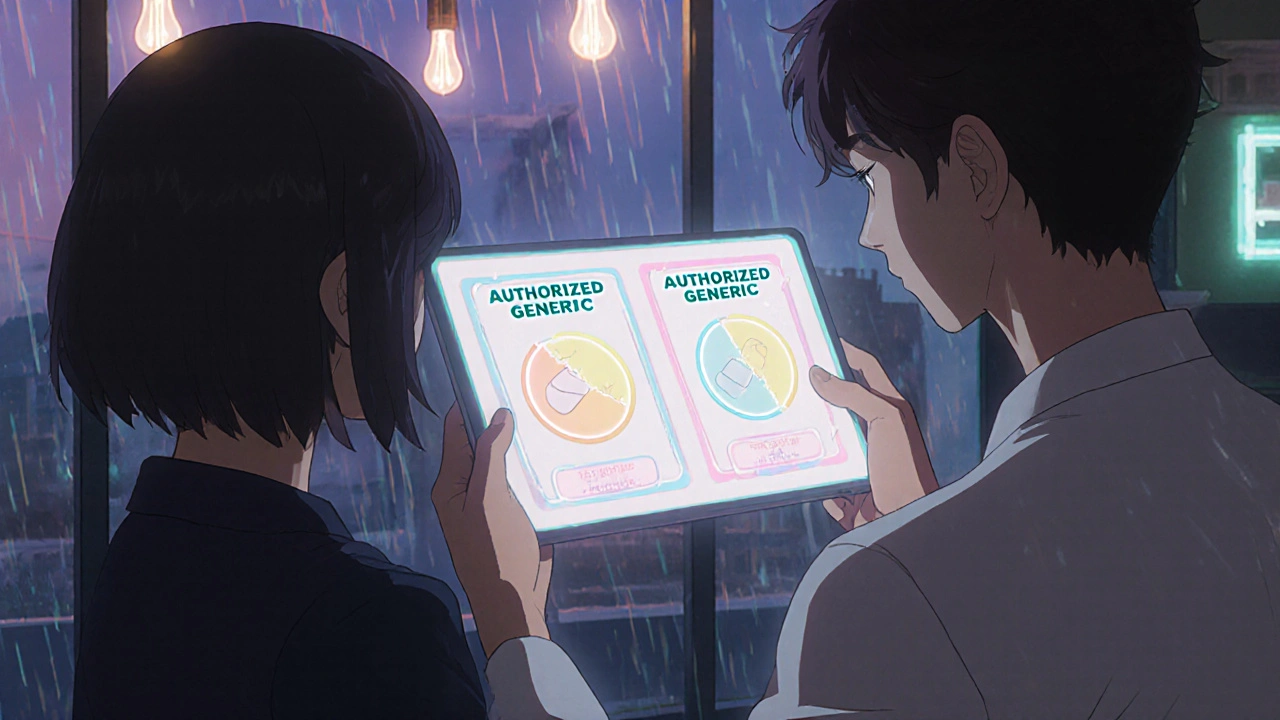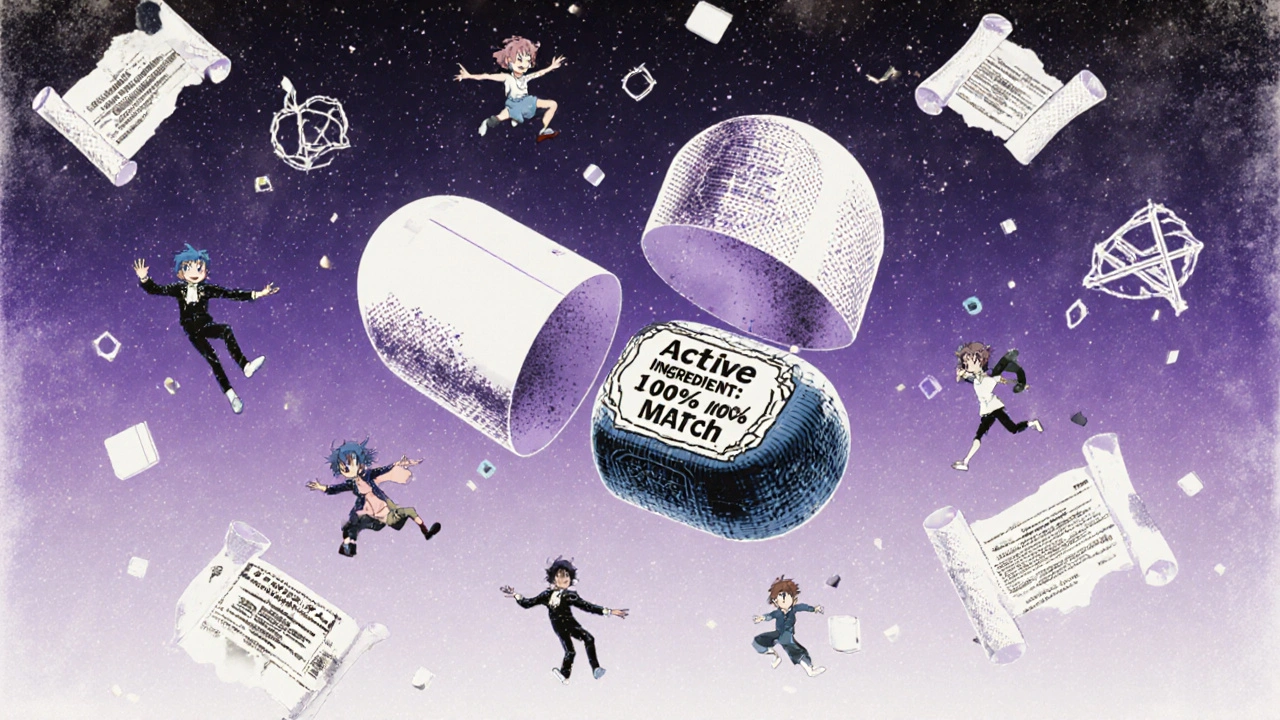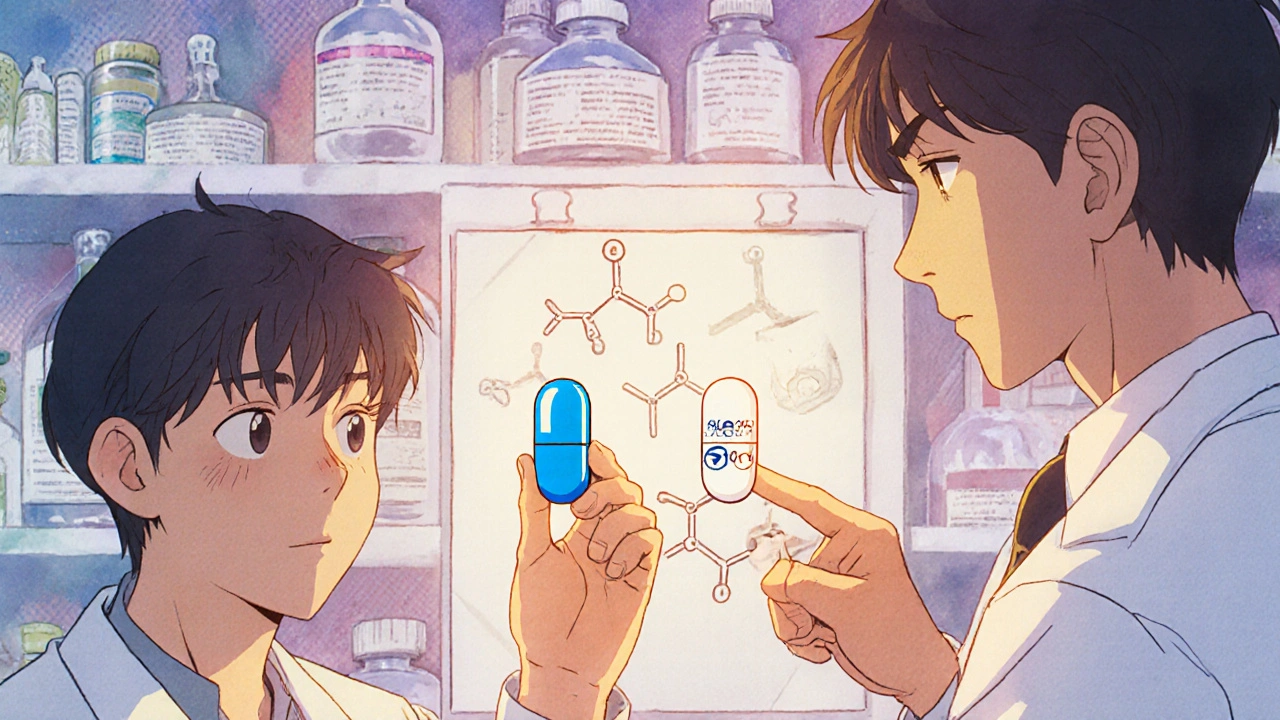Why does your authorized generic pill look nothing like the brand-name one?
You fill your prescription for a brand-name drug like ProAir HFA or Lipitor. Next time, you pick up the same medicine - but it’s a different color, shape, or has a weird marking on it. You panic. Did they give you the wrong thing? Is it weaker? Is it fake?
No. You’ve been given an authorized generic. And yes, it looks different. But here’s the truth: inside, it’s the exact same drug. Same active ingredient. Same inactive ingredients. Same manufacturing process. The only real difference? The label.
So why does it look so different? It’s not a mistake. It’s not a cost-cutting trick. It’s the law.
Authorized generics aren’t regular generics
Most people think all generics are the same. They’re not.
A regular generic is made by a different company. It has to prove it works the same way as the brand-name drug through clinical tests. But here’s the catch: it doesn’t have to use the same fillers, dyes, or binders. In fact, 64% of regular generics use at least one different inactive ingredient, according to USP analysis. That’s why some people get stomach upset, rashes, or allergic reactions - not from the medicine itself, but from the stuff around it.
An authorized generic is different. It’s made by the same company that makes the brand-name drug. Or by a partner they’ve licensed it to. It uses the exact same formula. Same active ingredient. Same exact inactive ingredients. Same size. Same shape. Same everything - except the branding.
The FDA calls it this: “an approved brand name drug that is marketed without the brand name on its label.” That’s it. No extra testing. No different formula. Just a plain pill with no fancy logo.
Trademark law forces the look to change
So if it’s identical, why does it look different?
Because U.S. trademark law says it has to.
Trademarks protect brands - not just logos, but the entire visual identity of a product. That’s why Coca-Cola bottles look different from Pepsi bottles. Same drink, different shape. Same idea with pills.
The FDA requires that every drug product has a unique appearance. Why? To prevent medication errors. A pharmacist shouldn’t hand you a pill and say, “This is Lipitor.” If it looks exactly like the brand, someone might accidentally take two pills thinking they’re the same.
So even though the authorized generic is chemically identical, the manufacturer has to change something visible. Usually, it’s the color. Or the imprint. Or the coating. Sometimes it’s both.
According to FDA data, 76% of authorized generics have a different color than the brand-name version. Almost 90% have a different marking. But here’s the key: those changes are tiny. They tweak the dye concentration by less than 0.05%. They don’t touch the active ingredient. They don’t affect how your body absorbs the drug.

Appearance doesn’t mean effectiveness
It’s natural to worry. You’ve been taking a blue oval pill for years. Now it’s a white capsule with “L123” stamped on it. Your brain says: “This isn’t right.”
But your body doesn’t know the difference.
Studies show authorized generics have 100% bioequivalence to the brand-name drug. That means your bloodstream gets the exact same amount of medicine. Same peak level. Same duration. Same results.
And here’s the proof: patients who switch from brand to authorized generic rarely report any change in how they feel. In fact, in GoodRx’s patient review database, 75% of users say they appreciate the authorized generic because they don’t have the side effects they used to get from regular generics.
Why? Because regular generics sometimes swap out fillers. One might use cornstarch. Another might use lactose. If you’re sensitive to lactose, you might get bloating. The authorized generic? Same exact filler as the brand. No surprises.
Cost savings - but not always
One big reason to choose an authorized generic? Price.
Brand-name drugs cost an average of $478 for a 30-day supply. Regular generics? Around $276. Authorized generics? About $341. That’s nearly 30% cheaper than the brand.
But here’s the catch: sometimes, the brand-name company charges almost the same price for the authorized generic. In 18% of cases, the authorized generic costs less than 10% less than the brand. That’s not much of a discount.
So why pay more? Only if you need the exact same inactive ingredients. If you’ve had bad reactions to regular generics - itching, nausea, headaches - then the authorized generic is your best bet. If you’ve never had issues, a regular generic is just fine and usually cheaper.
Why aren’t all drugs available as authorized generics?
You’d think every brand-name drug would have one. But only 38% of off-patent drugs have an authorized generic version.
Why? Because the brand-name company has to decide to make one. They’re not required to. And sometimes, they don’t want to. Why give away a cheaper version of your own product?
Also, it’s complicated. The brand company has to either make the authorized generic themselves or license it to someone else. That takes time, paperwork, and legal agreements.
Right now, 63% of authorized generics are made by the original brand company or their subsidiaries. The rest are made by third-party generics with permission.

What pharmacists want you to know
Pharmacists see this confusion every day.
On average, they spend 1.7 extra minutes per prescription explaining why the pill looks different. That’s not because they’re slow - it’s because patients are worried.
Many patients think the authorized generic is a “fake” version. Others think it’s a regular generic and are surprised when it’s not cheaper. Some even return the medication, convinced it’s wrong.
That’s why big pharmacy chains like CVS and Walgreens now use visual comparison charts. They show side-by-side pictures of the brand, the authorized generic, and the regular generic. They train staff to say: “This is the same medicine, just without the brand name.”
And if you’re confused? Ask. Don’t assume. Don’t stop taking it. Just ask your pharmacist: “Is this an authorized generic?”
What’s changing in 2025?
The FDA is making things easier.
Starting in 2025, authorized generics will be listed in the Orange Book - the official FDA guide to drug equivalence. Right now, they’re not. That’s why even some doctors don’t know they exist.
Also, the FDA is working on new guidelines to help manufacturers make authorized generics look *slightly* different - but not so different that patients get confused.
Companies like Pfizer are already testing “appearance continuity.” For some drugs, they’re keeping the same shape and only changing the color. That way, if you’ve been taking the same pill for years, you’ll still recognize it - just without the logo.
And demand is growing. Google searches for “authorized generic vs brand” have jumped 187% since 2020. More people are asking. More pharmacists are answering. More patients are choosing them.
Bottom line: It’s the same medicine
If you’ve been switched to an authorized generic, don’t panic. Don’t throw it out. Don’t assume it’s weaker.
It’s the same drug. Same formula. Same effectiveness. Same safety record. Just without the brand name.
The only reason it looks different? U.S. trademark law. Not quality. Not cost. Not safety.
If you’ve had bad reactions to regular generics, this might be your best option. If you just want to save money and have no sensitivities, a regular generic is fine.
But if you’re confused? Ask your pharmacist. They’ve seen it before. They know the difference. And they’re there to help you get the right medicine - no matter what it looks like.


Rebecca Cosenza
November 20, 2025 AT 17:57swatantra kumar
November 21, 2025 AT 16:17Cinkoon Marketing
November 23, 2025 AT 14:36robert cardy solano
November 24, 2025 AT 17:41Pawan Jamwal
November 25, 2025 AT 10:03Bill Camp
November 27, 2025 AT 06:26Lemmy Coco
November 29, 2025 AT 05:09rob lafata
November 29, 2025 AT 10:13Matthew McCraney
December 1, 2025 AT 01:43serge jane
December 2, 2025 AT 07:52Nick Naylor
December 2, 2025 AT 19:23Brianna Groleau
December 2, 2025 AT 21:52Rusty Thomas
December 4, 2025 AT 04:03Sarah Swiatek
December 5, 2025 AT 07:27